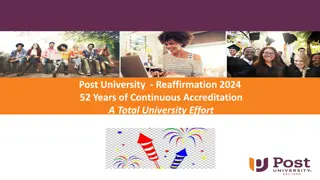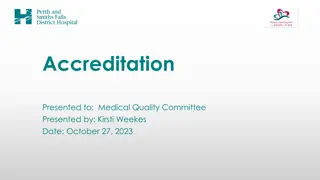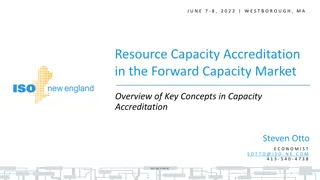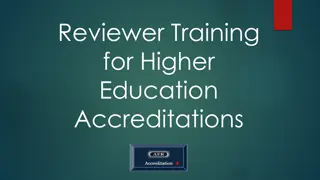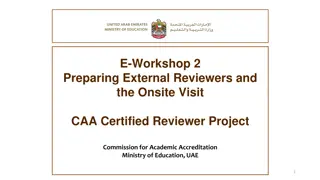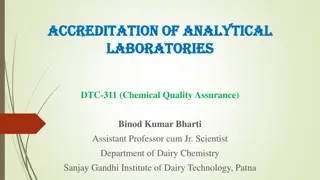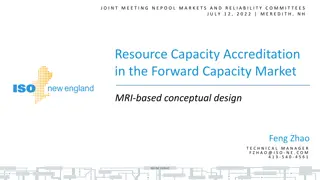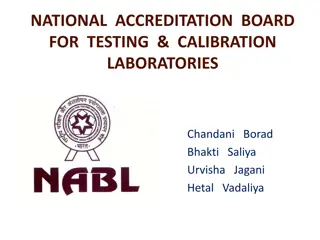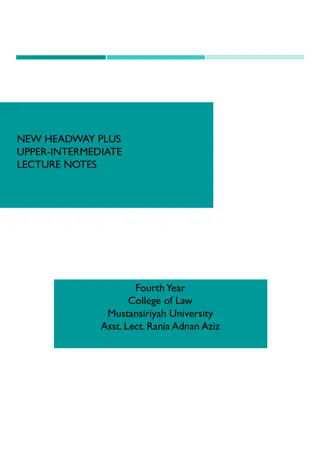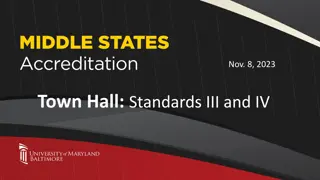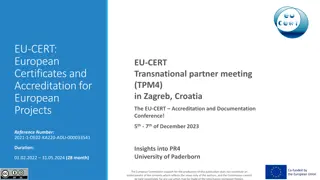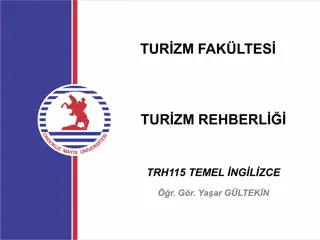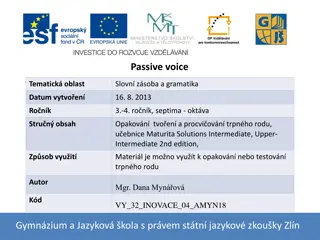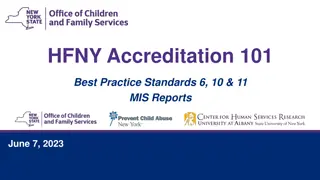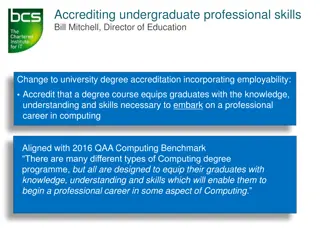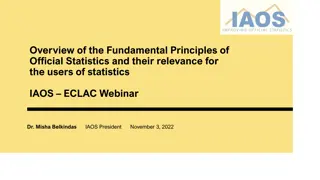Professional Accreditation for Statisticians: Past, Present, and Future Prospects
The article discusses the history and key features of the American Statistical Association's accreditation program for statisticians. It reflects on the changing needs of the statistical community, the challenges in articulating the value of accreditation to individuals and employers, and the importance of adapting accreditation programs to meet diverse needs.
- Accreditation
- Statisticians
- American Statistical Association
- Professional Standards
- Future Prospects
Download Presentation

Please find below an Image/Link to download the presentation.
The content on the website is provided AS IS for your information and personal use only. It may not be sold, licensed, or shared on other websites without obtaining consent from the author. Download presentation by click this link. If you encounter any issues during the download, it is possible that the publisher has removed the file from their server.
E N D
Presentation Transcript
The state of and prospects for The state of and prospects for professional accreditation for professional accreditation for statisticians statisticians Ronald L. Wasserstein, Executive Director, American Statistical Association June 15, 2016 1
A brief history of ASA accreditation Discussed within the association for many decades Fiercely debated in the early 1990 s Attempt to introduce certification failed at that time Discussion resurfaced a decade later Concept approved by ASA Board in summer 2009 Survey indicated strong interest on the part of the membership Accreditation implemented in late 2010 2
Key features of ASA accreditation program Based on the models successfully implemented in Canada, Australia, and the UK Portfolio-based rather than exam-based Exams were very controversial in the 1990 s discussion Very similar criteria to those in other countries Advanced degree in statistics, biostatistics, or closely related field Experience (5 years) Demonstrated professional competence Renewal required every five years Entire process from application to approval is on-line 3
What we understand better now The practice of statistics is very broad, very diverse, and this is reflected in the varied needs of the statistical community. Accreditation programs may need to change to meet these diverse needs. Not clear that current criteria meet the needs of official statisticians Still learning how to handle situations in which the examples of people s statistical work do not belong to them 4
What we understand better now We need to more effectively articulate to individual statisticians the value of accreditation. Applying is neither easy nor without cost Need to better communicate the value of having standards for the community Is it too hard to apply for accreditation? 5
What we understand better now We need to more effectively articulate to employers the value of employing accredited statisticians. Not really been successful at this at all We are looking to our marketing experts for help Difficult problem especially when there are more jobs for statisticians than there are statisticians Given that last point, how much effort should we put into this? 6
What we understand better now Portfolio-based accreditation is effective and appropriate for statistics, but does not seem (to some) to be as serious as exam-based approaches. Doctors, lawyers, architects take tests, why not statisticians? 7
Problems with exams Those doctors, lawyers, etc., have to pass licensing examinations in order to practice in their professions. At the present time this is not the case for statisticians, nor is it likely to become so. There are agreed-upon basic curricula for medical schools and law schools (for example), and these curricula are regulated by oversight bodies that accredit the schools. Again, this is not the case for statistics. 8
On the other hand, portfolio-based accreditation Allows us to look very broadly at the practice of statistics, to be inclusive of the many types of expertise that are developed by professional statisticians. The education and experience of accredited statisticians have been reviewed by qualified peers and found to meet specific criteria that have been agreed upon by several professional associations of statisticians. It is a worthy credential. 9
And now, increasingly, it is a global credential UK has had it for 20 years, Australia for over 10 years and Canada for nearly 10 years. US is in its fourth year. Italy, Sweden, Hong Kong, and others have developed or are developing accreditation programs In this spirit, the ASA recognizes the credentials of UK, Australia, and Canada Statisticians accredited by those countries can also receive automatic accreditation in the US The ASA has extended that same recognition to Italy and to Hong Kong (waiting for details regarding Sweden) Is there value in all of this? 10
A few final odds and ends 255 PStat members as of today 126 GStat members 11
A few final odds and ends Not as successful as we hoped it would be at this point, but we are still very glad we have done this 12
A few final odds and ends Accreditation is the only place where the profession actually defines itself 13
A few final odds and ends Should we have a program to accredit data scientists? 14


